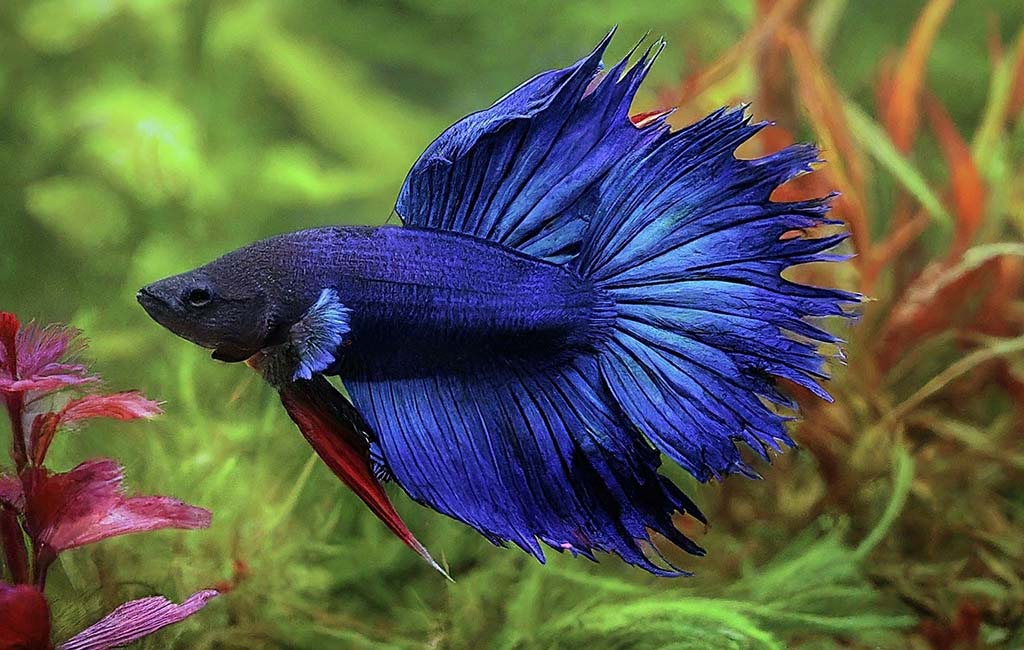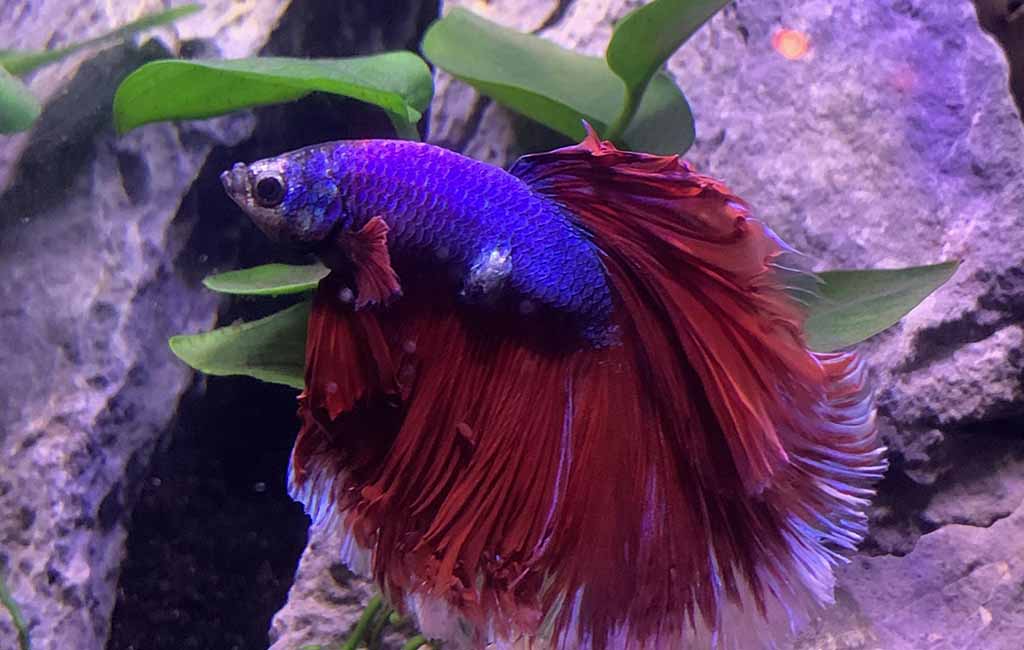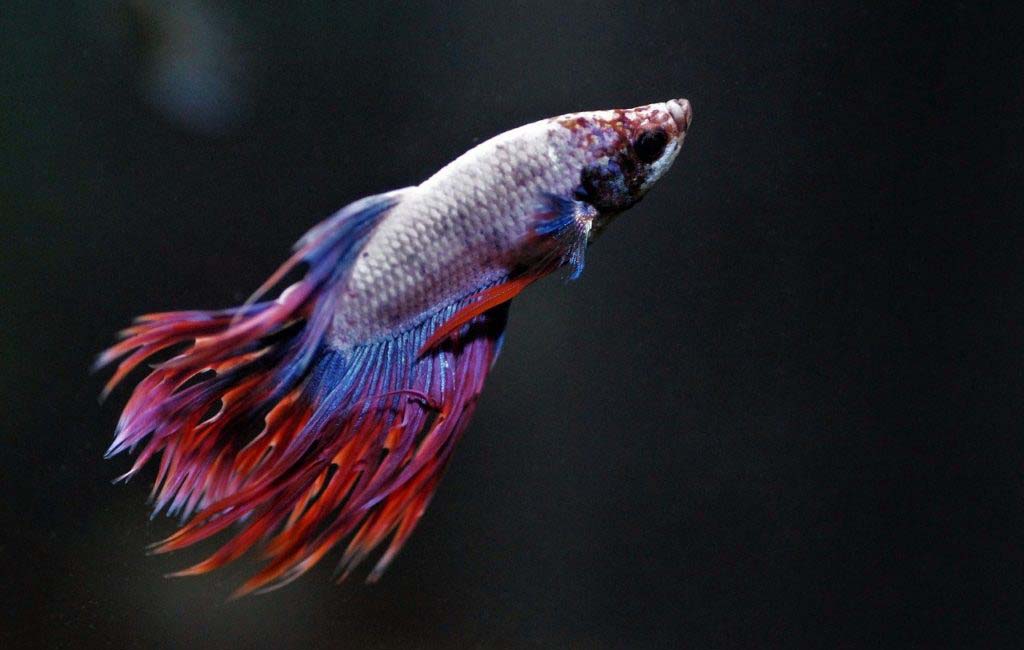Are you experiencing problems with your betta fish? You notice signs of infection, such as a poor-quality tail or discolored fins. In this article, I will describe the typical sources of betta fish fungal infections, these are fungal and bacterial. You will learn about the exact causes that make betta tails vulnerable to infections and how you can treat them.
Content Table
This post will help you nurse your fungal infection betta back to health and how to prevent it from happening, especially to smaller betta such as the Dumbo Feather Tail betta.
What Is Betta Fish Fungal Infection
The Betta fish are my favorite aquarium fish due to their bright colors, feel, and enormously developed fins. But like any other pets, they are not immune to illnesses that can affect them at times. It is therefore important to identify and know the frequently occurring diseases that are typical to fungal infection betta fish.
Betta Fish Infections: A Closer Look
Betta fish can suffer from both fungal and bacterial infections, each with its distinct characteristics and potential consequences.
Fungal Infections
Fungal infections in betta fish are often caused by poor water quality or stress. Common signs of a fungal infection in betta include.
- White or Cotton-like Patches: These patches may appear on the betta fish’s body, fins, or gills.
- Lethargy: The fish may become less active and spend more time resting at the bottom of the tank.
- Loss of Appetite: Infected fish may refuse to eat.
- Difficulty Breathing: Fungal infections on the gills of betta can hinder the fish’s ability to breathe properly.
Bacterial Infections
Bacterial infections in betta fish can arise from various factors, including poor water conditions, injuries, or exposure to contaminated water. Some common bacterial infections include.
- Fin Rot: This condition causes the fish’s fins to deteriorate and appear ragged or frayed.
- Pop-Eye: This pop-eye betta infection leads to the bulging of one or both eyes.
- Septicemia: This systemic infection can cause red streaks on the betta’s body.
- Columnaris: This columnaris fish bacterial infection manifests as cotton-like growths on the fish’s body, often around the betta’s mouth or gills.
Manifestations of Betta Fish Infections
Regardless of the specific type of infection, betta fish may exhibit several common symptoms.
- Lethargy: Reduced activity levels and spending more time resting.
- Loss of Appetite: Refusal to eat or decreased food intake.
- Changes in Appearance: Discoloration, white spots, or frayed fins.
- Abnormal Swimming Behavior: Difficulty swimming, swimming erratically, or floating at the water’s surface.
- Rapid Breathing: Gasping at the water’s surface, indicating fish respiratory distress.

If Betta infected
Why the Betta Tail Is Infected
The two most common diseases that affect the tail and fins of betta fish erupt due to different environmental or health problems of the fish. Knowledge of these factors helps treat and utilize prevention measures in such infections. Here are the main reasons why a betta’s tail or fins may become infected.
- Poor Water Quality: Stress and growth of bacteria or fungi from stained and unfiltered water may result. Ammonia, nitrites, and nitrate are toxic to the fish and cause delicate fins to be brittle and prone to infections.
- Fin and tail rot (bacterial or fungal): Fin rot is another disease that results from bacteria or fungi affecting the fin’s tissues that have been injured. It usually begins as color changes at the extremities or the formation of split ends and worsens if ignored.
- Physical Injuries: Bettas are very sensitive creatures and may get stressed to the point of tearing their fins on spiked ornaments, other abrasive materials, or other hostile fish. Superficial injuries from these blows may expose the betta’s skin, and they are vulnerable to infections.
- Aggressive Tank Mates: Despite this, other fish within the same tank are capable of nibbling the fins of the betta, which results in the formation of wounds that become infected. Male bettas are known to be aggressive and frequently can get injured during the competition.
- Stress: Factors like overcrowding, improper lighting, or sudden changes in the environment can weaken the immune system, making the betta more vulnerable to infections.
- Inadequate Nutrition: A poor diet lacking essential nutrients can lead to weakened immunity and slow fin regeneration, increasing the risk of infection.
Treat the Infected Betta Tail
Betta fish are extraordinary fish well-known for their fancy flowing tails; however, these tails are very sensitive to infections. The treatments for these ailments are appropriate if attended to promptly, failure of which may cause irreparable harm.
Below we will go over the usual causes behind an infected Betta tail as well as the most effective ways to get your fish back on the right track.
Causes of an Infected Betta Tail
- Poor Water Quality: Water tainted with bacteria or fungi has the potential to cause infections on the open area of the tail or wounds. In the water, ammonia, nitrites, or nitrates which are derived from fish waste exacerbate the situation.
- Physical Injury: Severing threatens the species since the shark tank decorations or aggressive tank mates cause injuries, including the tearing of the tail, which leaves the species prone to infections.
- Fin Rot: An infectious disease most commonly caused by bacteria and fungi that may be precipitated by stress or poor hygiene. The tail looks eroded, changed color, or has a white lining at the edges.
- Overcrowded Tank: A small tank space or the presence of aggressive fish species will create stress on your Betta and make it prone to diseases.
- Nutritional Deficiency: A bad diet will reduce the immunities that the Betta enjoys thereby making it vulnerable to diseases it cannot fight off.
Treatment for Infected Betta Tail
- Improve Water Quality
It is recommended to make a 25 – 50% water change right away. Check water parameters with a water test kit and keep ammonia and nitrite at 0 ppm and nitrates below 20 ppm. Install a reliable aquarium filter and heater to maintain stable conditions (temperature: 78–80°F, pH: 6.5–7.5).
- Isolate the Betta
Transplant the Betta to a different tank so that the fish is not exposed to stress other fishes or any contaminated water. Make sure that the water is clean and treated with good fundamental tank essentials like discuss above.
- Use Aquarium Salt
Mix one teaspoon of aquarium salt per gallon of water and put it in the quarantine tank to enable the wound to heal and to also eliminate the bacteria or fungi. Add the salt to water first then stir until dissolved.
- Administer Medications
For bacterial infections: This can be treated with antibiotics, or Maracyn.
For fungal infections: Treat with medications like Pimafix Fungus cure.
Make sure not to overfeed your Betta because it may cause harm to your pet and always read the dosage label on food prepared for your Betta fish.

Infected Betta tail
- Provide a Healthy Diet
Provide high-quality, easily digestible foods like pellets or freeze-dried foods enriched with vitamins and nutrients. Offering medicated food with anti-parasitic or antibacterial properties may also be necessary, depending on the type of infection. Always monitor feeding closely.
- Control and Change the Tank Conditions
Beware of sharp elements and the rough appearance of the products. The number and choice of the other fish species that may be kept together with betta fish should be minimized or avoided altogether as bettas are aggressive towards other fishes.
- Regular Monitoring
One should follow up on the status of the change on the tail daily, whether it has improved, has worsened, or has other aspects like discoloration or lack of tissue growth.
Care for a Betta If Infected
When a Betta fish becomes infected, it requires prompt care to recover fully. Here’s a step-by-step guide on how to care for an infected Betta.
Identify the Infection
- Symptoms of Infection:
| Swim Bladder Disease: Difficulty swimming or floating upside down. | Ich: White spots on the body and fins. |
| Fungal Infections: Cotton-like growths on the body or fins. | Bacterial Infections: Red streaks, ulcers, or bloating. |
| Fin Rot: Frayed, discolored, or deteriorating fins with black, white, or red edges. | |
- Quarantine the Betta
- Move the Betta to a separate, clean tank (quarantine tank) to prevent the spread of infection and reduce stress.
- Use a 2–5 gallon tank with a small heater, gentle filtration, and an external thermometer.
- Improve Water Quality
- Perform daily water changes (25–50%) in the main and quarantine tanks.
- Use a water conditioner to remove chlorine and harmful chemicals.
- Maintain optimal water parameters:
| Temperature: 78–80°F | pH: 6.5–7.5 | Ammonia, Nitrites: 0 ppm | Nitrates: <20 ppm |
- Treat the Infection
- Fin Rot or Bacterial Infections:
- Use antibiotics like Maracyn or Fin & Body Cure.
- Fungal Infections:
- Apply antifungal treatments such as Pimafix or Fungus Cure.
- Ich (White Spot Disease):
- Increase water temperature gradually to 82°F–86°F to speed up the parasite’s lifecycle.
- Use medications like API Super Ick Cure or Seachem ParaGuard.
- Swim Bladder Issues:
- View the Betta for 1–2 days, then feed small portions of boiled, deshelled peas to ease digestion.
- Add Aquarium Salt (Optional)
Dissolve 1 teaspoon of aquarium salt per gallon in water. It can reduce stress, prevent secondary infections, and promote healing. Please avoid using salt long-term or for scaleless fish in the tank.
- Provide a Balanced Diet
Feed high-quality Betta pellets or frozen foods (e.g., bloodworms, daphnia). Make sure you don’t overfeed them, as it can worsen water quality and stress the Betta.
- Minimize Stress
- Reduce bright lighting and loud noises around the tank. You need to make sure that the Betta has hiding spots like plants or caves. You also need to avoid frequent handling or disturbances.
- Monitor Progress
- Check the Betta daily for signs of improvement (e.g., reduced discoloration, healing fins).
- Continue treatment for 7–10 days or as prescribed.
- If there’s no improvement, consult a veterinarian or seek advice from an aquarium specialist.
- Prevent Future Infections
- Maintain clean and stable water conditions.
- Use a tank of at least 5 gallons with proper filtration.
- Avoid overcrowding or introducing aggressive tankmates.
- Quarantine new fish before adding them to the main tank.
Prevent Dumbo Feather Tail Betta Fish from Infected
Melting betta fish also referred to as Dumbo Feather Tail Betta Fish are breathtaking but their tailors are long, flowing, and are in many times prone to infections. Here are some tips to help prevent tail infections in your Dumbo Betta:
Water Quality Maintenance
- Regular Water Changes: Change water one-quarter of the time weekly, depending on the level of toxins or contaminants in the water.
- Water Temperature: Know that the water temperature should be maintained in a range of 78-82 F (25-28C).
- Tank Water pH: Keep the water at least as acidic as apple juice or as alkaline as white wine, ideally between pH 6.5-7.5.
- Water Hardness: Moderate water hardness.
- Filtration: Ensure that you use the best filter to filter the water to maintain high-quality water with high oxygen content.
Tank Environment
- Tank Size: Make your Dumbo Betta aquarium a large one that should not be less than 5 gallons in size.
- Substrate: Option a flat and comfortable substrate such as sand in order to prevent injury to the fish’s fins.
- Decorations: Soft smooth items should be used for decoration since a fish’s fin can be cut by hard items.
- Live Plants: By using live plants, there will be enhanced water quality as well as the addition of hides.
- Avoid Tank Mates: Dumbo Bettas are naturally solitary fish and cannot be kept with other fish.
Feeding
- High-Quality Food: It is recommended that your Dumbo Betta should be fed on high-quality betta pellets coupled with little portions of frozen bloodworms and brine shrimp.
- Portion Control: Do not feed your pets too much because the leftovers can spoil the water.
- Feeding Frequency: Don’t overfeed Betta and you should only feed them once or twice a day based on how hungry they appear.
Monitor Your Betta Closely
- Early Detection: Regularly inspect your Betta’s fins for any signs of redness, fraying, or white spots.
- Quick Action: If you notice any signs of infection, isolate your Betta and treat the infection promptly.

Prevent fungal infection from betta
Concluding Thoughts
Taking care of a fungal infection in betta may comprise special care, treatment, and ensuring that appropriate conditions within the fish aquarium are met. Basically, in as much as it is hard to treat infected fish, you can always notice the infections early, sequester the fish, and address water quality and feeding to get your Betta fish back on track.
Vaccination and proper care for the young especially, for those quite sensitive breeds like Dumbo Feather Tail Bettas, protecting them from future sicknesses and maintaining them healthy and strong to make these lively fishes beautiful.


Leave a comment